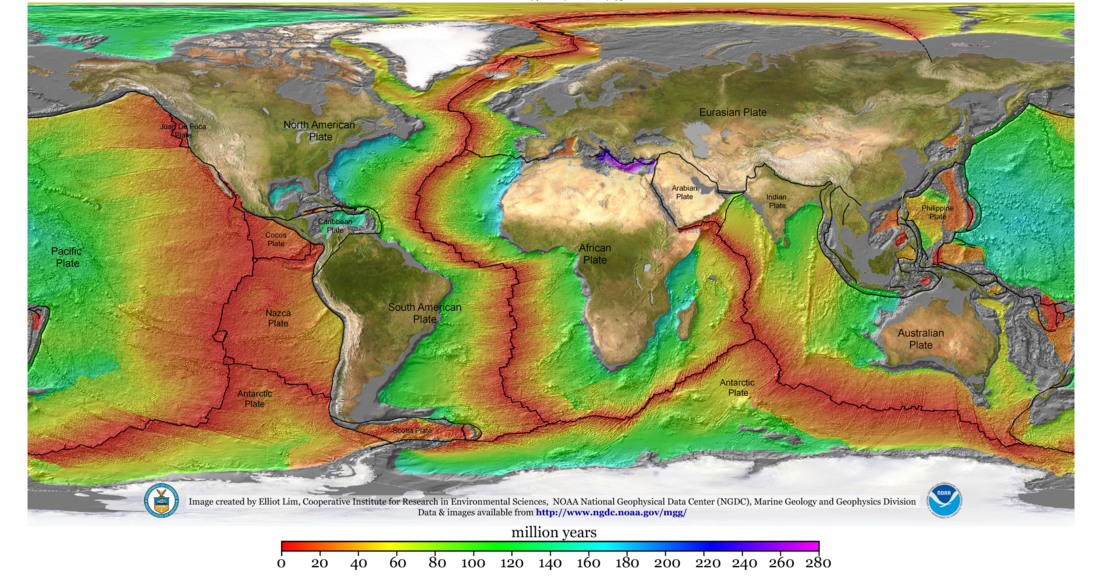Geophysics (/dʒiːoʊfɪzɪks/) is the physics of the Earth and its environment in space. It is also the study of the Earth by measuring things and collecting data. Sometimes geophysics means studying the geology of the earth such as its shape, gravitational and magnetic field, internal structure and composition. It may also mean how they create plate tectonics, magma, volcanism and rock formations.[1]

Some geophysicists now also study the hydrological cycle including snow and ice. They study how the oceans and the atmosphere move. They study electricity and magnetism in the atmosphere, ionosphere, and magnetosphere. How the earth and sun affect each other is also part of geophysics.[1][2][3]
Geophysics was only recognized as a special area of study in the 19th century. But, there were geophysicists in ancient history. The first magnetic compasses were made in the fourth century BC and the first seismoscope was built in 132 BC. Isaac Newton applied his theory of mechanics to the tides and the precession of the equinox. Instruments were developed to measure the Earth's shape, density and gravity field, as well as parts of the water cycle. In the 20th century, geophysical methods were developed for remote exploration of the solid Earth and the ocean.
Studying geophysics may help with problems such as mineral resources, reducing natural hazards, and protecting the environment.[2] Geophysical survey data help find petroleum reservoirs, mineral deposits, groundwater, and archaeological relics. Such data can also tell the thickness of glaciers and soils, and tell which areas have environmental damage that should be fixed and avoided to visit.
Notes
References
Other websites
Wikiwand in your browser!
Seamless Wikipedia browsing. On steroids.
Every time you click a link to Wikipedia, Wiktionary or Wikiquote in your browser's search results, it will show the modern Wikiwand interface.
Wikiwand extension is a five stars, simple, with minimum permission required to keep your browsing private, safe and transparent.
